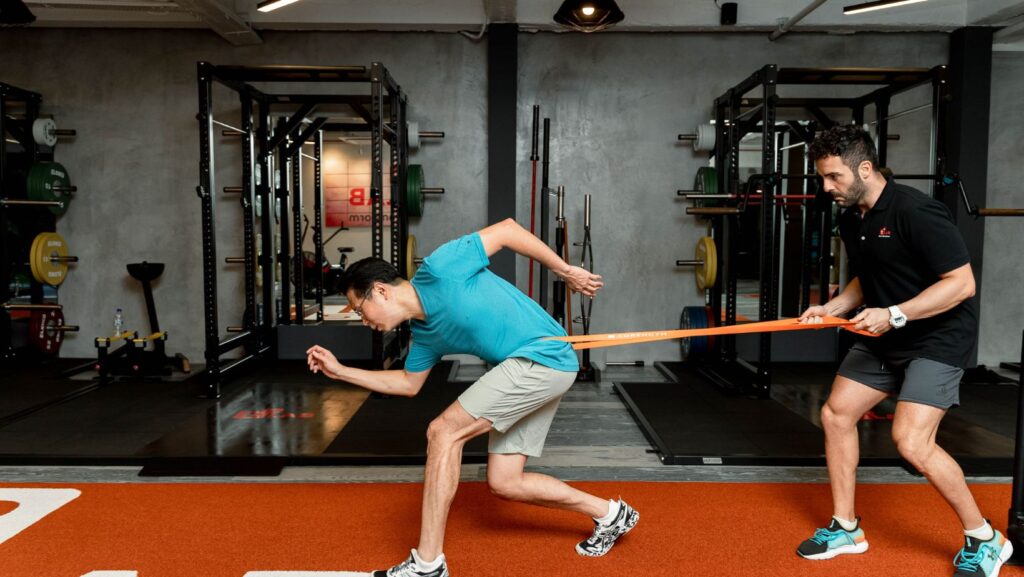3 Training Principles

Unlocking the secrets to effective training isn’t as complex as you might think. With the right principles in place, you can transform your workouts and see results faster than ever. This article will delve into three fundamental training principles that can be the game-changer in your fitness journey.
Whether you’re a fitness newbie or a seasoned athlete, these principles are applicable to all. They’re the foundation of any successful training program, and understanding them could mean the difference between stagnation and progress. So, strap in and get ready to revolutionize your training approach with these three powerful principles.
Understanding the 3 Training Principles
This section delves deeper into the three fundamental training principles, providing insights into their significance. Grasping these principles grants a strategic advantage, optimizing an individual’s training regimen.
Overview of Progressive Overload

Progressive overload entails systematically increasing training stimuli over time. This principle dictates increased resistance, repetitions, or training frequency to challenge the body continuously, resulting in increased strength and endurance. For example, an individual aiming to improve upper-body strength might initially lift 10kg dumbbells. However, as their strength improves, progressing to 12kg or 15kg dumbbells ensures a consistent challenge, promoting further development.
The Role of Specificity in Training
Specificity underscores tailoring workouts to match an individual’s desired outcomes. It urges one to align their training with their specific goals. If a person targets increased strength, their program may concentrate on heavy resistance training with fewer repetitions. Conversely, a focus on endurance warrants a higher repetition count with lighter weights. Evidently, specificity allows for personalized training programs, optimizing results based on individual goals.
The Importance of Recovery and Adaptation
Recovery and adaptation serve as integral parts of any effective training regimen, often neglected but paramount for sustained progress. The body rebuilds and strengthens itself during rest periods between workouts, underscoring recovery’s crucial role in achieving fitness goals. Moreover, adaptation occurs when the body gets accustomed to the applied training stress, leading to improved performance. For instance, initially, running 5 kilometers might be challenging, but with consistent training and adequate recovery, one eventually finds it easier as the body adapts.
How to Apply Progressive Overload in Your Workout Routine
Examples of Progression Techniques
Progression techniques form an integral part of a successful workout strategy, facilitating a boost in strength and endurance. Several examples of these techniques underscore its practicality.

- Increment in Weight: Gradually adding weights to one’s exercises sets a higher demand on the muscles, prompting them to grow and enhance their capacity. For instance, a person who lifts 20 pounds in the bicep curls in the first week might aim to lift 22 pounds the next week.
- Increase in Repetitions: Expanding the number of repetitions performed for a specific set of exercises also aids progressive overload. For example, an individual who performs 10 repetitions of squats in one set could aim to perform 12 repetitions in the next training session.
- Boost in Frequency: Increasing the number of workouts performed in a week can be beneficial. Say, a person who exercises three times a week might consider increasing the frequency to four times a week.
Common Mistakes to Avoid
While applying progressive overload in a workout routine, it’s imperative to take note of certain practices that might impede progress.
- Over-Ambitious Increases: Applying excessive increments in the volume or intensity of workouts constitutes a common blunder. For instance, a person lifting 50 pounds should not aim to lift 100 pounds in the next session.
- Insufficient Recovery Time: Ignoring the importance of proper rest and recovery can be detrimental to progress. A person working out seven days a week without adequate rest, for example, is likely to suffer from burnout.
- Neglecting Nutrition: Failing to consider the role of diet can be fatal. A person undertaking rigorous workouts ought to ensure they’re consuming a nutritionally balanced diet to fuel their training. Should they neglect this aspect, their performance may considerably dwindle.

